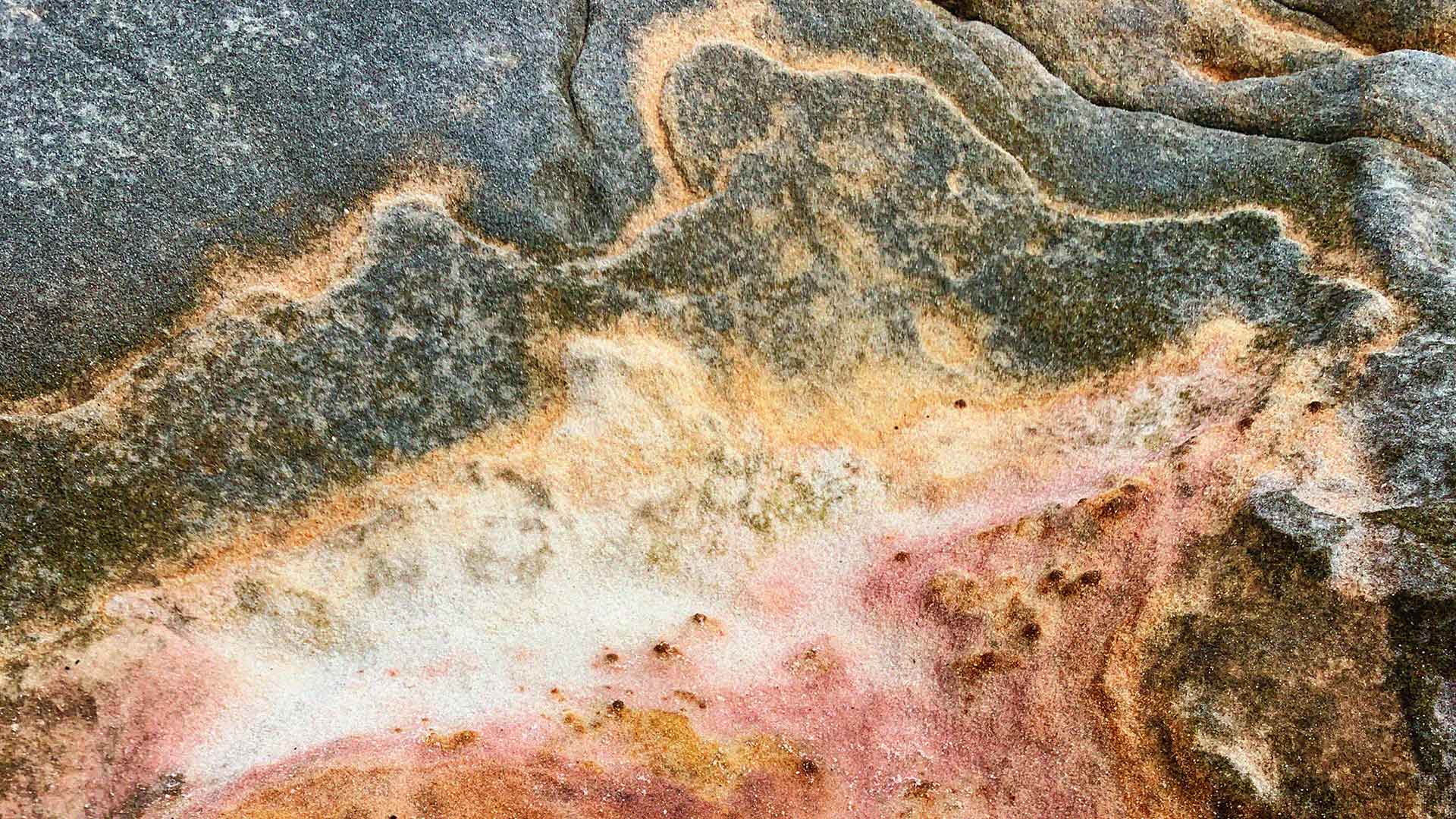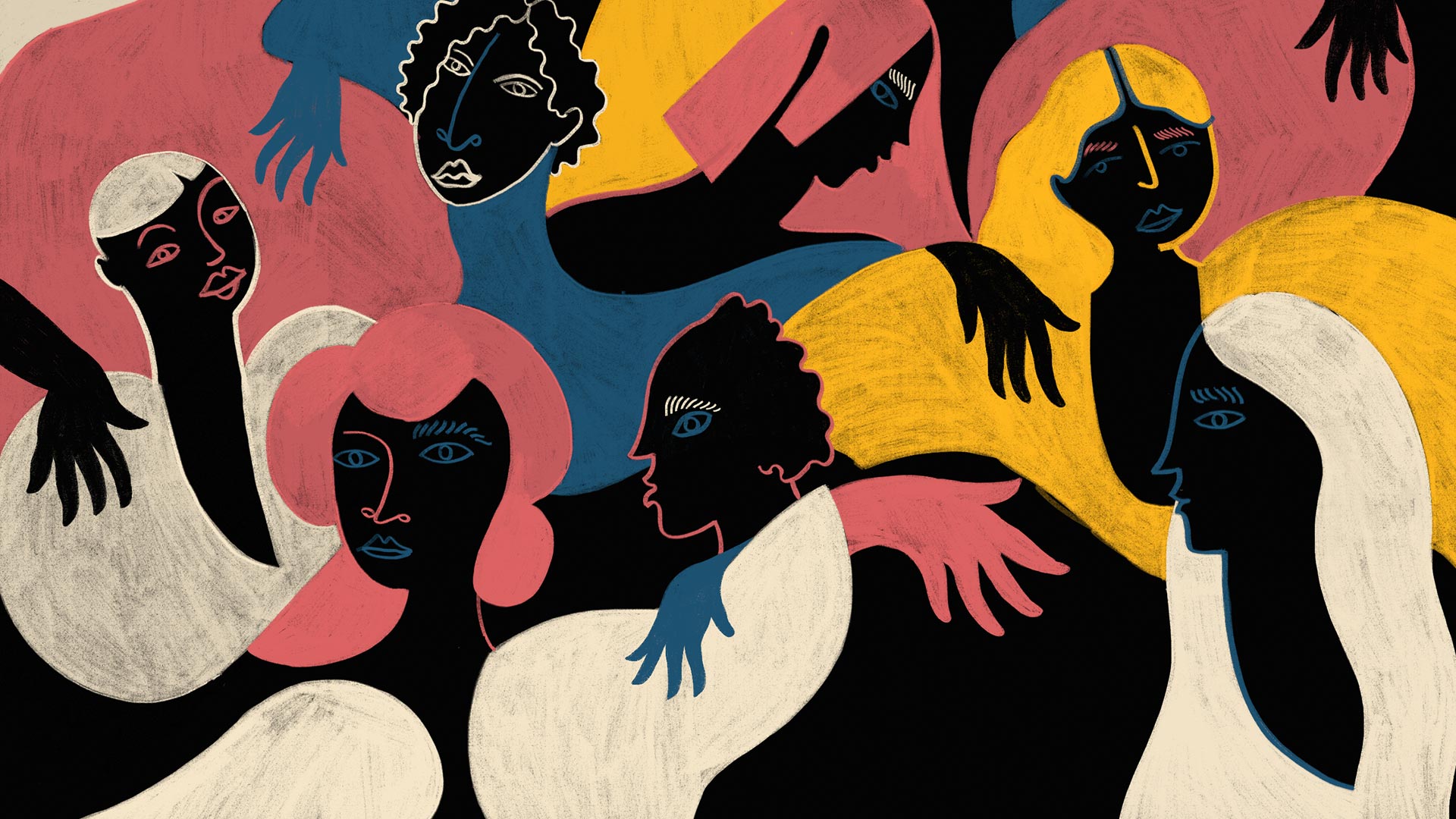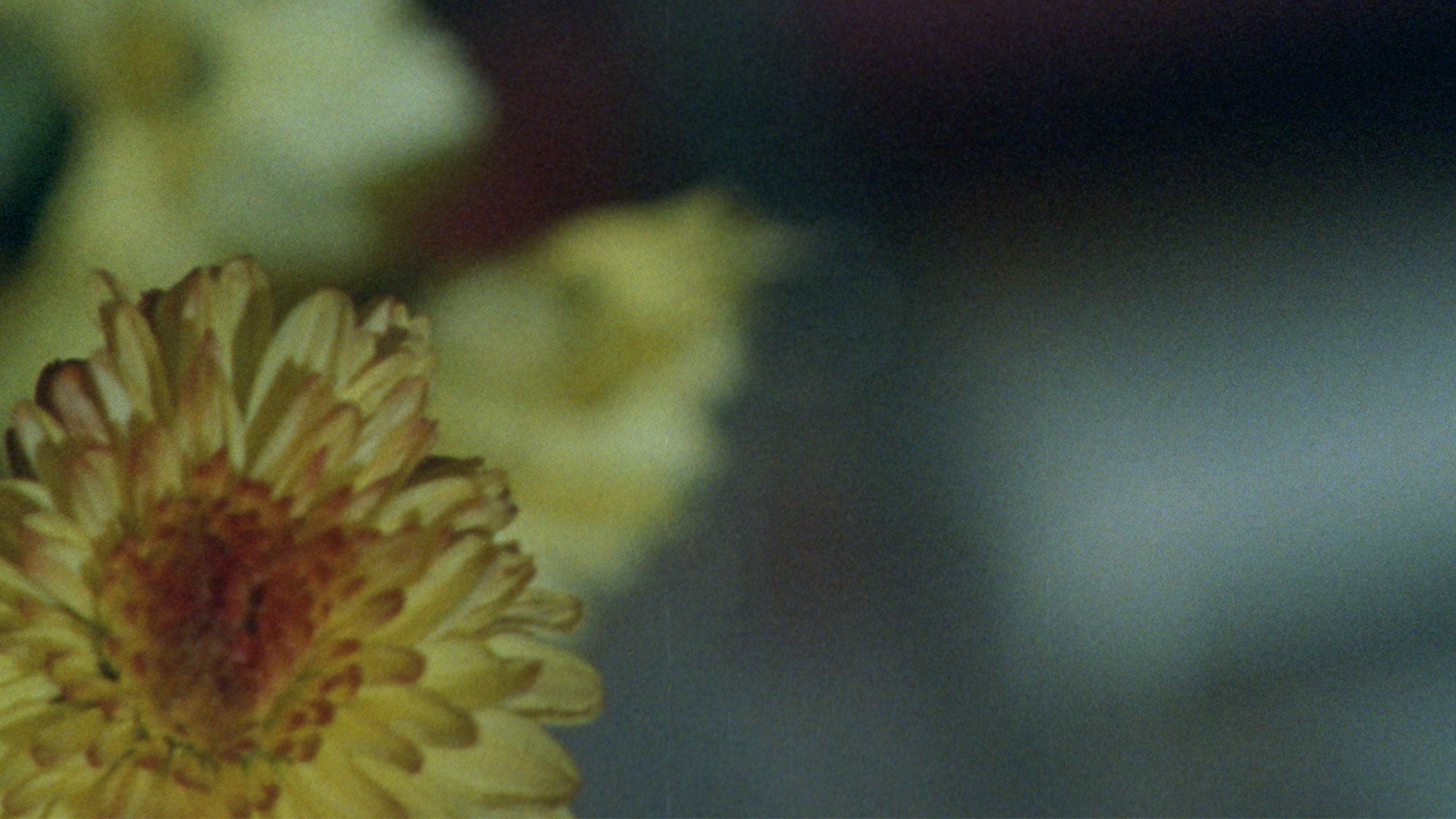Sensorialist Literature
Every month, three books are spotlighted for their ability to elucidate, illuminate and perhaps even rejuvenate a given theme or topic—forming the latest chapter in Aesop’s longstanding affinity with literature, and treasured partnership with Penguin Random House.

Personal transformation narratives abound, and society’s preoccupation with reinvention supplies so many industries connected to style, wellbeing and beauty. But why stop at improving one’s fitness, or simply changing the colour of one’s hair? In Kafka’s The Metamorphosis, protagonist Gregor Samsa wakes one morning in the body of a nameless insect, possibly a cockroach, the possibilities within the hypothetical world of literature at least, quite literally are endless.
These stories of transfiguration, while perhaps unorthodox to the contemporary imagination, have throughout time allowed readers the space to consider the limitations of the human experience—and indeed, what it means to be alive. Through them we are often led to understand the false nature of certain binaries and restrictions imposed by historic systems of power.
Perhaps this is why the surreal is enjoying something of a revival, as subsequent generations question these rules and are drawn to narratives that pique the imagination, allowing readers to reappraise who they are and how they live. It is why all three texts highlighted here were met with praise and critical acclaim on publication, and continue to attract readers the world over..
Recommended reading
Melissa Broder, The Pisces
Alone and adrift, Lucy takes a minor detour from her PhD thesis on the ancient Greek poet Sappho to romance a merman whom she encounters on the shore at Venice Beach, Los Angeles. Together they embark on a relationship more satisfying than all off the otherwise fleeting encounters Lucy has with men on Tinder—as her aqueous companion helps her to reach a new understanding of love and of life.
Rachel Ingalls, Mrs. Caliban
A similar tale of interspecies romance—where our protagonist does not undergo a transfiguration personally but is transformed forever by the loving encounters she has with a reptilian creature of mythic proportions. This modern classic is compact in size yet utterly memorable, forming the inspiration for the Oscar-winning film by Guillermo del Toro, The Shape of Water.
Friendship
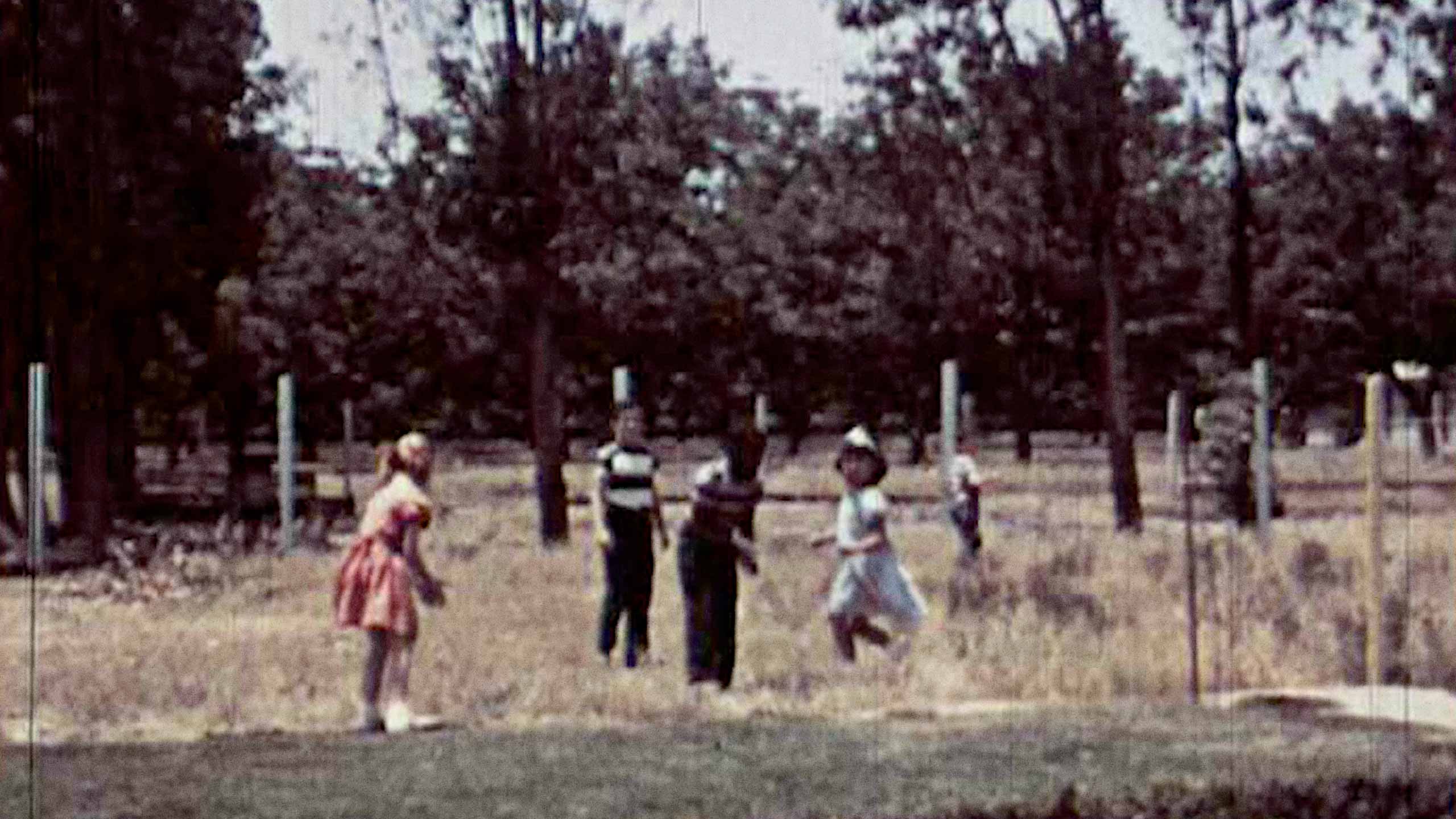
For many, the sign of a great novel is one which, on nearing the final pages, the reader feels a sense of loss. As they absent-mindedly leaf through the final pages of acknowledgements, they bid farewell to the characters with which they have formed a bond—the fictitious individuals that have, at least for a while, become companions. Stories of friendship have a particular ability to conjure such a feeling; these are tales that may bring back memories of mirth, perhaps the odd squabble and overcoming life’s hurdles, together.
While the innate desire to be understood by others is a universal thread running through stories of friendship, in these narratives readers may also discover different circumstances and unexpected modes of companionship that broaden perspectives. Take for instance the formative connections depicted in Margaret Atwood’s Cat’s Eye, which explores the lasting impact of tumultuous female friendships, or the disparate backgrounds of the four comrades in Hanya Yanagihara’s A Little Life, in which an actor, painter, architect and lawyer seek to ‘make it’ in New York. Indeed, stories of friendship are not even confined to us homo sapiens—think France Price’s bond with her beloved cat, Small Frank, in Patrick Dewitt’s deliciously wry French Exit, or the relationship between a robot and their ward in Kazou Ishiguro’s Klara and the Sun—more on that below.
C.S. Lewis once wrote: ‘Friendship is born at the moment when one person says to another, “What! You too? I thought I was the only one.”’ And the same can be said of the books that document it; novelists’ studies of companionship help us unpack the complexities, joys, mishaps and marvels of the families we forge for ourselves. Sometimes fraught, never boring—friendships will always prove fertile ground for writers and readers alike.
Recommended reading
Heaven, Mieko Kawakami
Despite its slender size, this novel exudes a deeply affecting strength, much like its teenage protagonists. Shortlisted for the 2022 International Booker Prize, the story follows two students who find themselves united by a shared experience of relentless bullying as they search for a place away from the torment—whether the environment be real or imagined. While unflinching in its descriptions of violence, the novel also reveals how friendship can provide respite and moments of joy, even in the most difficult of times.
Mayflies, Andrew O’Hagan
Manchester, 1986. The Fall, New Order and The Smiths are headlining a festival, and a group of not-so-charming men enjoy a raucous weekend of music and mayhem. What follows is a story of male friendship (and fragility) as 30 years on, the bond made between the two ringleaders of the group, James and Tully, has transformed. As delightfully witty as it is poignant, Mayflies has been described by Carol Ann Duffy as ‘one of those novels to press into the hands of friends.’ A recommended story to share, then, with companions of one’s own.
Klara and the Sun, Kazuo Ishiguro
While Ishiguro’s tale about the bond forged between a solar-powered AF (Artificial Friend) and the girl who selects them may be the stuff of science fiction, it is also a novel that gets to the heart of friendship—the why,
how and what of these instinctive bonds. Seen through the eyes of Klara, the AF, family ties and friendships are presented with an insightful naivety. The reader is reminded of how, much like the sun, companionship is essential to all human beings—and is led to wonder whether in the future, it may be just as important to their robotic counterparts.
Courage
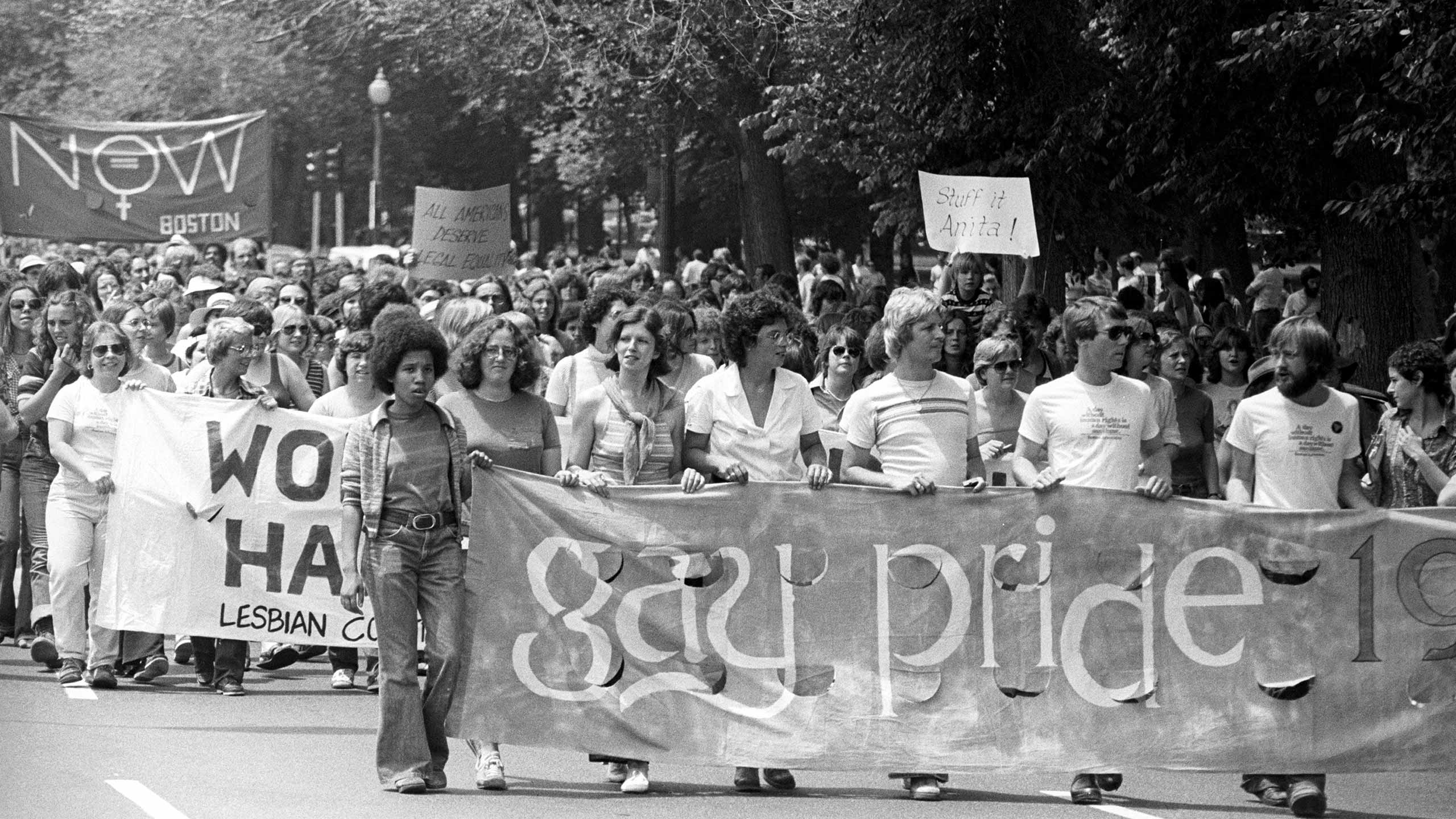
Queer stories are often described as ‘coming from the margins’—they are tales of ‘otherness’, shining a light on hidden lives concealed in the shadows of the bind. And yet while such language accurately reflects the way LGBTQIA+ voices have been—and in some areas still are—marginalised by discriminatory laws and ideals, it fails to capture the intrinsic power of queer storytelling and the strength of the community behind it.
Now, perhaps more than ever, many writers find themselves emboldened to share narratives that seek to assert, not assimilate. They explore new modes of expression that blur genres, challenge ideals and provide catalysts for discussion. Here, in the margins, is where some of the most courageous, exciting, and thought-provoking voices in contemporary literature may be found.
This renewed sense of unabashed creativity is seen in a fresh wave of queer writers whose characters, plots and openness breaks through familiar themes of shame and secrecy that have long been bound up in LGBTQIA+ narratives. Take, for example, Vivek Shraya’s I’m Afraid of Men, which explores her experience as a trans woman while rebuking toxic modes of masculinity, or Canadian First Nations Two-Spirit writer Joshua Whitehead and his works, which underline the intersections of Indigeneity and queerness. Such unapologetic voices reveal the power of books to carve out new chapters in queer history, bit by bit revealing a more inclusive view on what it means to be LGBTQIA+.
Although the capacity for queer literature to drive positive change is clear, there is no denying that in many countries the ability to celebrate such narratives is limited. As the next series of Aesop Queer Libraries is set to open across the globe, we think of all the stories perhaps written in a notebook or letter, but never destined for the shelf; the tales shared between close friends—those small acts of defiance. This instinct to share stories is, after all, an essential part of being human. So, while somewhere in the world a queer book may still be banned, or a section of a library cleared, the writing will never stop, the stories will continue to be shared, the hand will always reach for the pen.
Recommended reading
Why Be Happy When You Can Be Normal?, Jeanette Winterson, 2011
In this deeply moving memoir, Jeanette Winterson reveals the experiences that influenced her seminal 1985 novel Oranges Are Not the Only Fruit. The title of the book is a real-life question posed by her adoptive mother when Winterson, then 16, revealed that she was a lesbian. Through the chronicle of the neglect and abuse she suffered as a child, rings the voice of a woman who is resolute in her belief that the answer to happiness lies in living openly and authentically. Fearless, affecting and at times devastating, it is a text that leaves an indelible impression.
The Prophets, Robert Jones Jr, 2021
Robert Jones Jr’s debut novel is one which explores the fearlessness of love, even in the most painful of circumstances. Set on a plantation in America’s antebellum South, the story follows the lives of two enslaved men as they deal with threats both within and outside their community. Oscillating between moments of tender intimacy and heartless violence, this explosive novel ends with over 10 pages of acknowledgements that pay respect to the black writers, musicians, and actors whose courageousness and creativity have inspired Robert Jones Jr throughout his life.
All the Flowers Kneeling, Paul Tran, 2022
‘To make art is to argue for the fact that we exist,’ says poet Paul Tran, ‘that we have original thoughts and feelings, that we matter.’ It is this belief that charges Tran’s work with a sense of urgency and an invigorating honesty. As the child of Vietnamese refugees and a survivor of abuse, their debut poetry collection explores the process of rebuilding one’s identity through innovative poetic forms that blend global politics with personal experience.
Difference
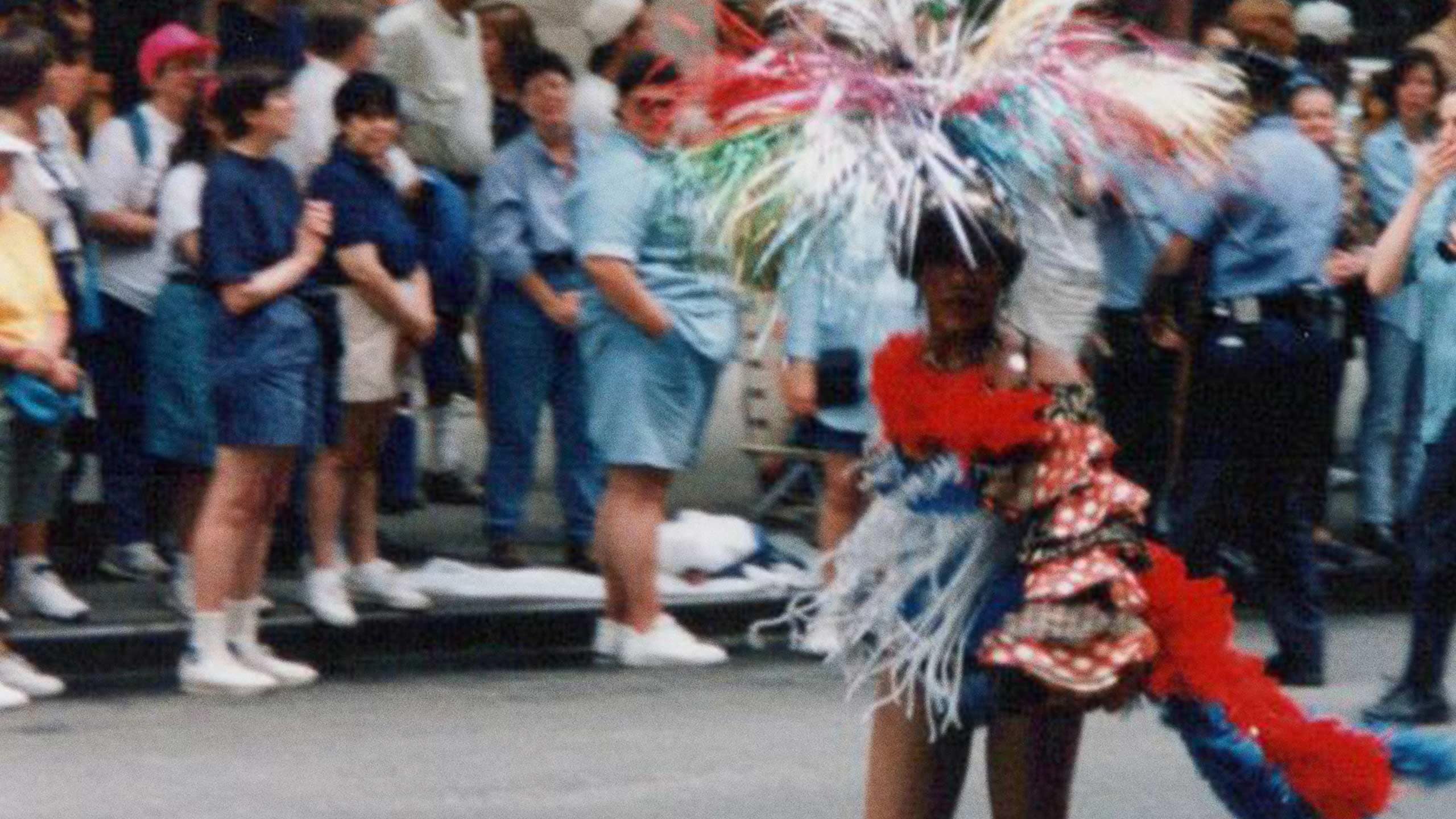
In societies that frequently demand that LGBTQIA+ individuals spell out what gender or sexuality they align with, queer people are often well-versed in authoring their own blurbs, whether written to come out or conceal. However, while the pressure to announce personal differences may at times feel stifling, when such stories are given the space they need, they can provide vital sources of empowerment, validation and joy. These stories of difference can also help forge new currents in the mainstream—opening fresh channels for self-expression, empathy and illuminative ideas, disrupting the ebb and flow with a message of defiance.
As discourses become more nuanced and the readership of queer literature broadens, LGTBQIA+ narratives offer a wider-than-ever range of perspectives from this diverse, vibrant community. These are tales written not merely to put others at ease or to ‘set the record straight’—indeed, they reveal a distinct distaste for anything so linear—but to provoke conversations, questions and reflections on the wide range of experiences that make up the whole.
In decades past, queer literature was—apart from some notable exceptions, of course—predominantly led by white cisgender authors, meaning that shelves of LGBTQIA+ literature in the average bookstore often failed to reflect the true spectrum of the community. Now, however, the variety of published writers has grown, and with it the opportunity for readers to explore how age, race, religion, gender and class are all issues that intersect with an individual’s experience of living as a queer person. From the story of a closeted 74-year-old Caribbean man in Bernadine Evaristo’s Mr Loverman (2013) to the hopeful messages on gender fluidity contained in Alok Vaid-Menon’s Beyond the Gender Binary (2020), the last 10 years have brought us books and characters that defy genres and stereotypes—and all the better for it.
To ensure that a diverse range of queer stories continues to be told, it is vital that readers support the organisations and initiatives which champion and nurture underrepresented voices. From venerable queer bookstores such as London’s Gay’s The Word and Tokyo’s Okamalt, to literary prizes, grants and publishing initiatives like Penguin Pride, such businesses and programmes rely on our support to share the word, join in the discussion and perhaps even make a contribution to the growing canon of queer stories, should inspiration strike.
Recommended reading
Burning My Roti: Breaking Barriers as a Queer Indian Woman by Sharan Dhaliwal
Part memoir, part manual, this book seeks to inspire a new generation of South-Asian women, covering topics such as sexuality, identity, ageing, colourism and mental health. The collection of essays, interviews and reflections is built on the foundations of Burnt Roti—an online and print publication founded by Dhaliwal, which features contributions from a broad spectrum of South-Asian creatives.
Rainbow Milk by Paul Mendez
‘When did you last read a novel about a young, black, gay, Jehovah’s Witness man from Wolverhampton who flees his community to make his way in London as a prostitute?’ asks Bernadine Evaristo on the book jacket of Paul Mendez’s debut novel. As Evaristo highlights, this dauntless yet deeply tender coming-of-age story is one that underlines how race, class and religion affect one’s experiences as a queer person. A singular story that urges reflections on the myriad of LGBTQIA+ experiences.
A Natural History of Transition by Callum Angus
This collection of short stories looks to nature as an allegory for the trans experience, with fantastical tales that see people transform into mountains, birth cocoons and unravel hometown mysteries. Angus, who is based in Portland, Oregon, pens narratives that are as metamorphic as his characters, shifting in style and shape to disrupt restrictive notions about the trans experience.
Further reading
Explore more LGBTQIA+ reads, author interviews, a Pride playlist and details of Aesop Queer Libraries across the globe.
Patience

The past few years necessitated a temporary change of pace for most people, whether this spelled an increase in activity—from home schooling to having to provide greater care to friends and loved ones—or the challenges associated with maintaining a routine of self-discipline while working from home. Whatever the case, people everywhere were forced to submit to a new and unfamiliar way of life and relinquish much of the control that they had previously exercised over certain parts of their life.
Now, as restrictions are finally lifted, a fresh set of challenges present themselves with the resumption of public life. Many will joyfully embrace the return to pottering around market stalls, dining out and attending live concerts. Yet even the most gregarious souls might still be prone to feelings of trepidation. In such cases, Aesop prescribes a policy of patience and radical compassion—of learning to enjoy the journey as much as the destination.
This might be easier said than done, however. Modern societies are schooled to extol the virtues of speed and productivity. Yet while such tendencies have their place—both in the functioning of economies and the management of personal wellbeing—the opposite is equally important. Thankfully, it has never been easier to hone the skill of patience, thanks to a growing body of research and writing dedicated to uncovering its many benefits and rewards.
Recommended reading
Patience by Toby Litt
Skilfully avoiding sentimentality, this tender and witty novel centres on the friendship between two boys living in a 1970s orphanage. The first of the boys, Elliott, is confined to a wheelchair. The second, Jim, is blind and mute. Together and within the limitations of their respective disabilities, the pair slowly and methodically create an original way to communicate, one that will ultimately challenge the strict authority of their surroundings.
Thinking Fast and Slow by Daniel Kahneman
The speed of modern life seldom accommodates for quiet thought and deep contemplation. As a result, many learn to react to their environments, rather than respond in a way that is constructive or helpful to their aims. In this groundbreaking book and global best-seller, psychologist Kahneman seeks to redress this tendency, urging his readers to adopt a more measured way of thinking that is conducive to greater social cohesion and happiness.
How to Do Nothing by Jenny Odell
An original and incisive text that establishes an exit plan for those suffering the effects of over-stimulation and excessive exposure to digital communications technology and social media. Odell writes with strength and persuasion, delivering a book that is part self-help manual, part revolutionary tract. In today’s society, with its emphasis on traffic, attention and exposure, maybe the most radical act of all is the one that involves doing very little.
Coexistence

Synonymous with spring—and as such, famously featured in the opening passage of T. S. Eliot’s poem, ‘The Waste Land’—April is an ideal time for reflecting on the systems that underpin the natural world. Earth Day is an ideal occasion to consider many issues that are vital to the present—among them climate change, resource security, and protecting the planet for future generations.
This can be a moment of opportunity, rather than despair. The climate movement is a site of immense creativity, inspiring those who work for Aesop to continually reassess the company’s impact on the world and to identify ways of supporting initiatives in the communities where it operates.
Aesop has aways shown reverence and respect for the natural world, from the ample use of greenery and occasional piles of autumn leaves in-store, to the development of vegan and cruelty-free formulations.
Prioritising sustainability now and in the future, however, will require a commitment to understanding the experiences of communities from around the world, each tackling climate change in their own respective ways. After all, a more sustainable future will be predicated on cooperation over competition, and communication will be key.
From design to philosophy, poetry to memoir, more writers than ever are devoted to considering how our species interacts with its environment, and the many ways in which the natural world gives back—offering mankind sustenance and sanctuary. Spanning the canonical and the contemporary, the following texts are must-reads for the mutually minded and ecologically aware.
Recommended reading
Entangled Life by Merlin Sheldrake
Opening the reader up to the otherwise hidden world of mycelium systems, this ground-breaking work has revolutionised popular ideas of nature. From ‘communication systems’ that exist far below the forest floor, to the beauty that is generated from decay, fungus, mushrooms and toadstools are transfigured from gory oddities and a feature of fairytales, to one of the most fascinating facets of our very real world.
Ecology of Wisdom by Arne Næss
Considered foundational to the modern environmental movement, philosopher Næss is credited with establishing a more holistic and all-encompassing view of the natural world and mankind’s place within it. In this collection, readers are given fresh perspectives on the environment, as well as philosophical teachings and suggestions for a more harmonious and peaceful way of living—all told with generosity and great wit.
The Outrun by Amy Liptrot
Part recovery memoir, part reflection on nature and its ability to heal, this unforgettable book communicates the inextricable relationship between the individual and her environment. It joins the works of Robert Macfarlane and Ali Smith—both associated with what has been termed ‘new nature writing’—to push the formal boundaries between novel, biography and psychogeographical tract. Learn about the monoliths of Orkney, a strange, hallucinatory phenomenon known as fata morgana and the restorative practice of cold swimming.
Womanhood

The first instalment of Sensorialist Literature hones in on works that explore the multiplicity of experience constituting womanhood. On the 8th March, the world celebrates International Women’s Day, and while we are keen to join the chorus of praise, cliché must be avoided—it hardly requires us, after all, to state the leading role of women in creating much of what is positive in the world.
Far better, we believe, to defer to the voices who have spoken out against patriarchal oppression so effectively as to now be considered greats. bell hooks, Audre Lorde and Shon Faye—each in their own way and with distinct flair—raised the bar for progressive rights, confronting society with some of its most deeply-held and stubborn prejudices about gender, sex and the rights of women and girls.
By sharing these titles, we are also afforded the opportunity to reflect on some of the advances that have been made in gender equality over the past year. In 2021, eight countries elected female leaders to the highest seat in office, including Barbados, Sweden, Tunisia, Moldova, Samoa, Kosovo, Tanzania and Estonia, while Ngozi Okonjo-Iweala, a Nigerian citizen, became the first woman and African to lead the World Trade Organisation. Representation alone is somewhat futile without the commitment to policies that promote and protect women’s right, however, and in this vein, Switzerland and Chile both joined the list of countries to legalise same-sex marriage, while Spain advanced laws on rape to include all acts of non-consensual sex.
In arts and culture, Chloe Zhao became the first woman of colour to win Best Director at the Academy Awards for her film, Nomadland, and the Tokyo Olympics saw a record-breaking 49% female participation.
These gains are worthy of celebration, but unfortunately, for those whom Simone de Beauvoir critically termed the second sex, the battle is far from over. Misogyny persists, in stubborn gender pay discrepancies, continued and systemic harassment of women and a huge inequality in health provision—to name just a few of the issues that make life so difficult for fifty percent of the population. Hence the need to continue reading, arming ourselves with as much wisdom and knowledge as possible to better support the women that we love, admire and have so much to thank for.
Recommended reading
All About Love by bell hooks
Theorist, activist and feminist bell hooks wrote prodigiously throughout the late twentieth and early twenty-first centuries on the interrelated issues of gender, sex and social class. In All About Love, she challenges the harmful gender stereotypes promoted through popular fiction and its emphasis on ego, suggesting that we should dispense with traditional ideas of romance, encourage men to connect with their emotions, and support women to demand greater levels of respect.
Sister Outsider by Audre Lorde
In this collection comprising of essay and memoir, the poet and theorist Audre Lorde makes the case for emotional and intuitive intelligence. Domestic wisdom and social conscience—historically considered the domain of the woman—have been derided (see: ‘soft skills’). Here, Lorde challenges that view, asking us to consider the vital importance of such wisdom, and the steely determination of the matriarch, the homemaker, and the girl.
The Transgender Issue by Shon Faye
While only published in 2021, Shon Faye’s debut book has achieved widespread critical acclaim to become an instant classic. Drawing on her extensive historical and political knowledge, Faye generously explains the case for transgender people and their equal place in society, compelling us to reach a more complete and comprehensive understanding of the law, human rights and many philosophical aspects of morality and popular ethics.
‘Although they are / Only breath, words / which I command / are immortal.’
